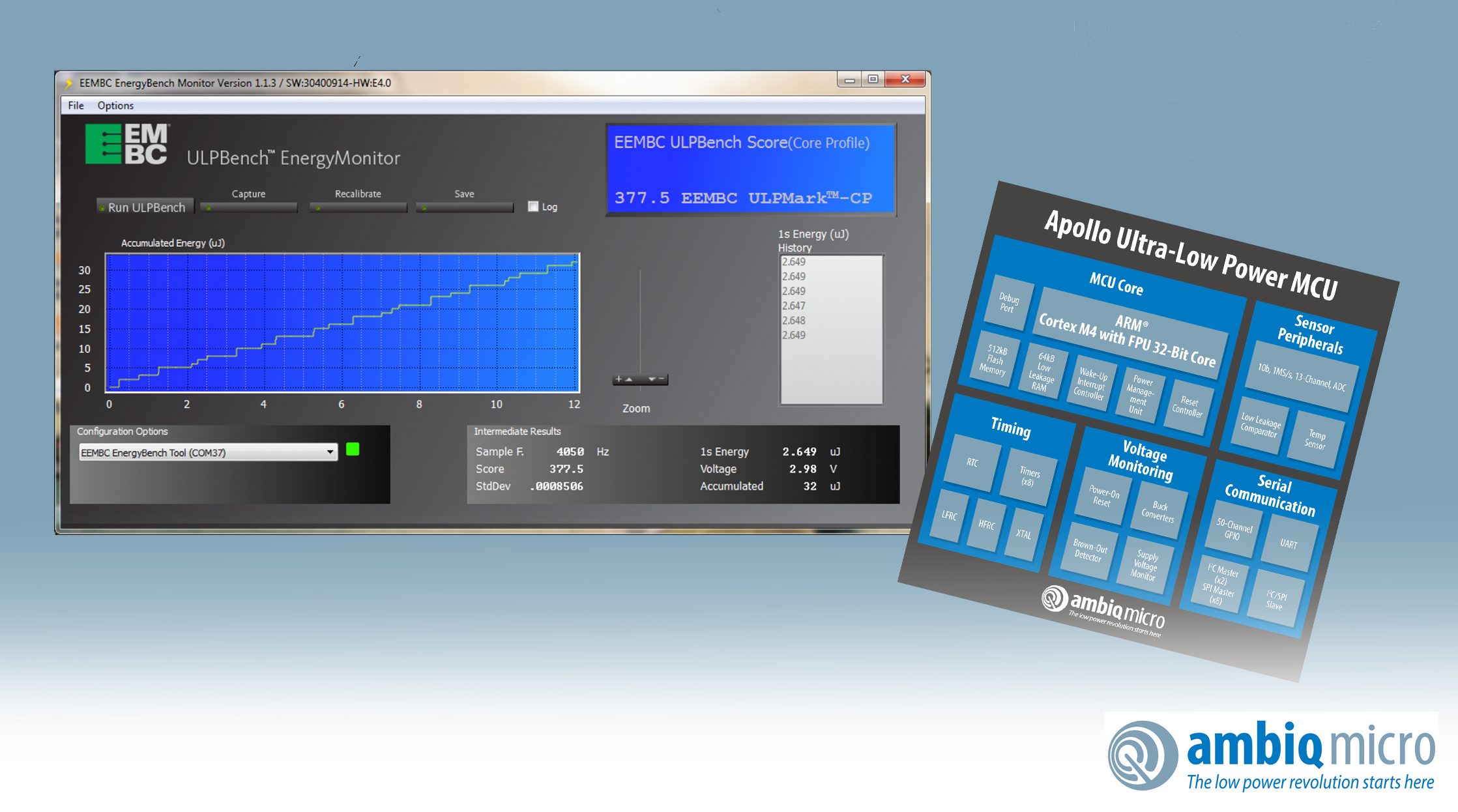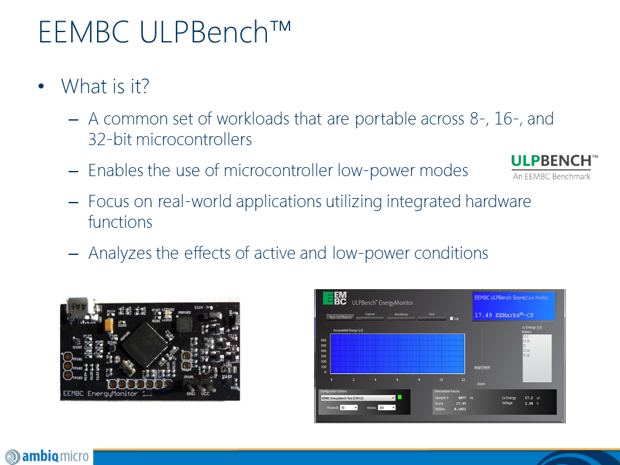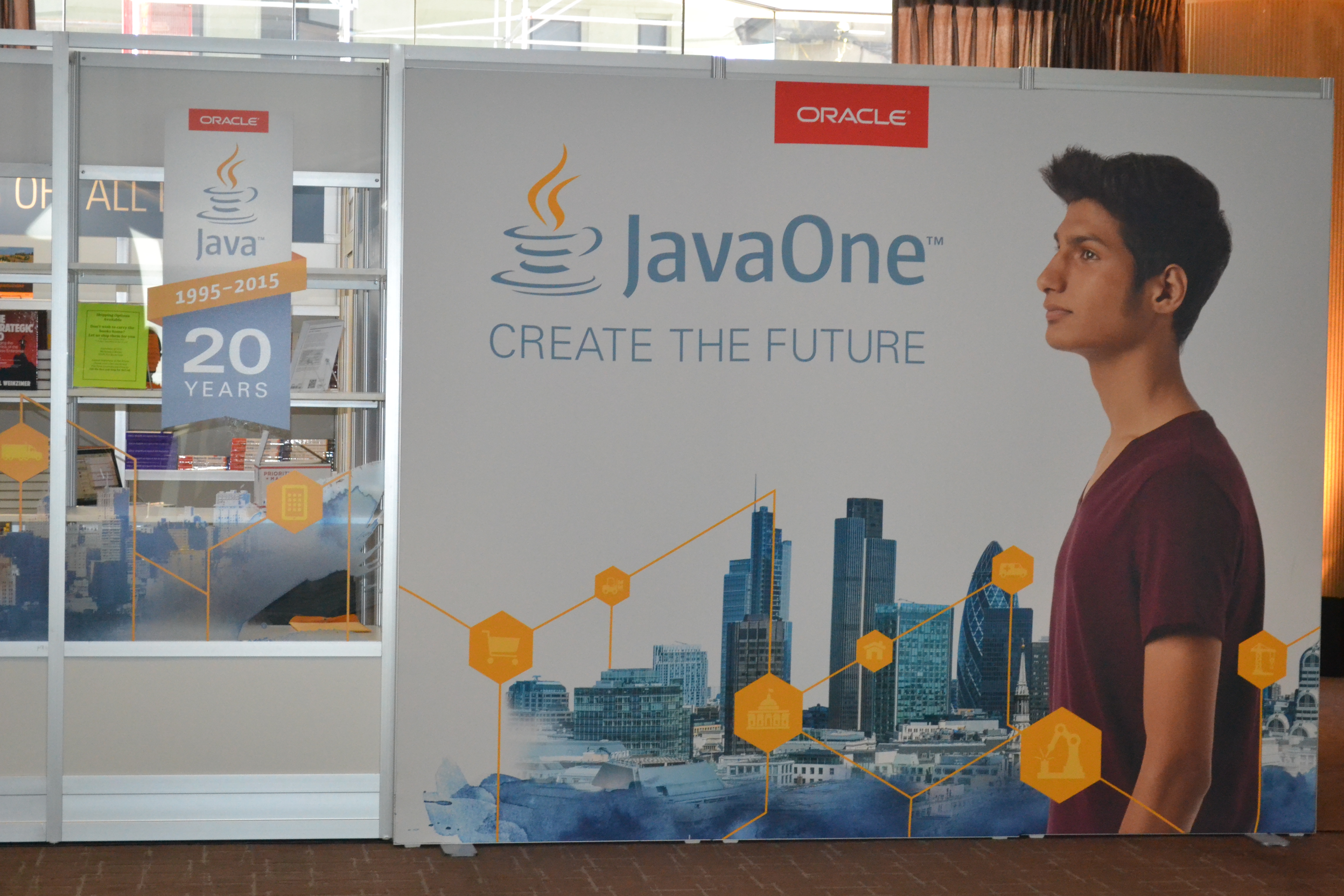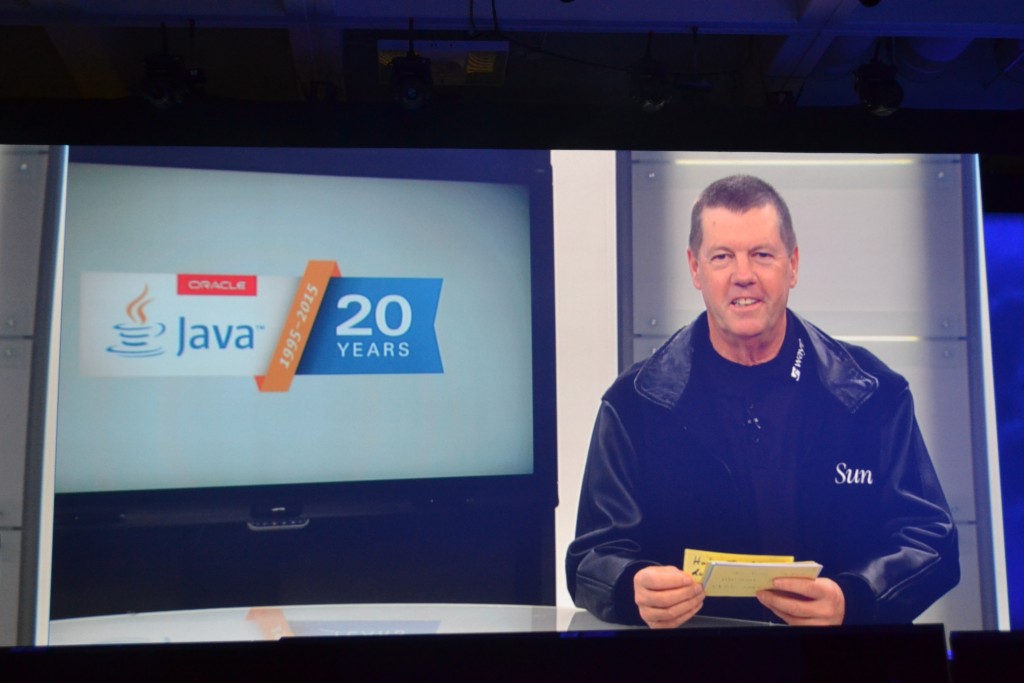
by Lidia Paulinska | Nov 23, 2015
At the ARM TechCon in Santa Clara, Texas based Ambiq Micro announced the capabilities of their latest MCU for the IoT market. In an overview dinner with CEO Mike Noonen, VP of Marketing and Strategy Mike Salas, CTO Scott Hanson and VP Sales Vince Murdica they discussed the release of their new 32 bit MCU for the wearables and IoT market that is based on the ARM Cortex Core. The design uses the Ambiq Micro Sub-threshold technology to produce a processor that can be benchmarked at the lowest power in its class.
The product has recently moved to volume production, and is being used in a currently available sleep monitor and fitness monitor. To support the design, which is an ARM M4 core with FLASH memory and FPU, is a software development kit, a Free RTOS and a full development board. Wireless development products, supporting a Bluetooth Low Energy connection, from their partner Dialog Semiconductor, were on display at the show. All of these development products are currently available.
The system can be operated at voltages down to 2 volts which allows the system to have extended operation between charges, bringing new lifestyle applications to the IoT and wearables marketplace.


by Lidia Paulinska | Nov 17, 2015
Java celebrated its 20 years anniversary with the giant cake on the stage of Moscone North at Oracle – Java Open World conference this year in San Francisco and the speakers highlighted the most memorable Java events of the last two decades. Scott McNealy, longtime CEO and co-founder of Sun Microcomputers that was acquired by Oracle, joined the Java keynote via internet. As an iconic executive & passionate programmer Scott shared his top 12 Java developer nightmares of 2015 making the audience laugh.

Former Sun CEO Scott McNealy
As of today, Java devices outnumber the number of people on the earth. There are 13 billion devices running Java, including 200 million medical and 1 billion automotive devices. It is the number one development platform with 10 million developers worldwide. The platform is strong and continues to move forward not only on devices, but in the cloud as well. The key for these products, is not just smart sensor but the network and connectivity of any device to the cloud, so it communicates to the cloud and back. On the top of that connectivity, the Java environment has a real time system of analytics that transforms the network to knowledge network.
 The growth of Java is closely connected and driven by the growing IoT market. So the question to be asked is how big is IoT? There were many estimates given at the conference on how the IoT market is going to grow for next few years. They vary from 50 billion to 200 billion devices. Ericson and Cisco estimate 50 billion, Morgan Stanley 75 billion, but IDC expected 200 billion.
The growth of Java is closely connected and driven by the growing IoT market. So the question to be asked is how big is IoT? There were many estimates given at the conference on how the IoT market is going to grow for next few years. They vary from 50 billion to 200 billion devices. Ericson and Cisco estimate 50 billion, Morgan Stanley 75 billion, but IDC expected 200 billion.
Java simplifies the development of the products. Today kids are coding with Java. Next generation of Java developers are creating animations, modifying Minecraft, building Lego Mindstorms, programing NAO robots and Raspberry Pi devices, and more.
Congratulations Java and wish you many more years.

Java 20yr Cake and developers





